For many years, fans of magical girl anime tended to be from the same demographic as its principal characters: little girls. The genre of young girls using mystical powers to fight monsters saw its potential broadened, though, in 2011 with the television premiere of Puella Magi Madoka Magica, which cast an unflinching, unsentimental eye at the physical and psychological dangers of tasking middle school girls with battling extradimensional entities.
Madoka went on to become such a hit that its original 12 episodes were retouched and repackaged into a pair of theatrical releases. This month a third film, Puella Magi Madoka Magica: Rebellion opens in Japan, and a special exhibition of Madoka artwork and statues is being held in Tokyo.

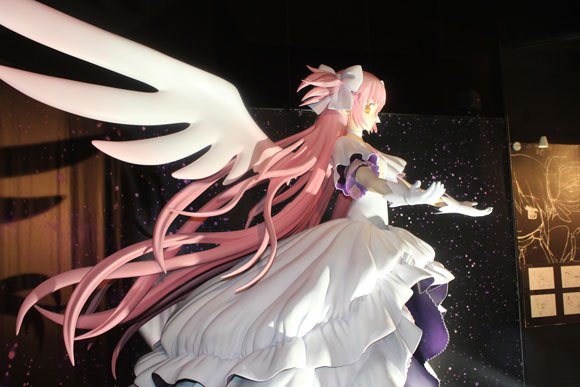
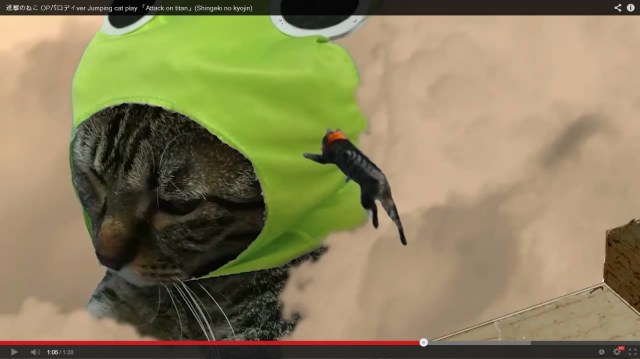

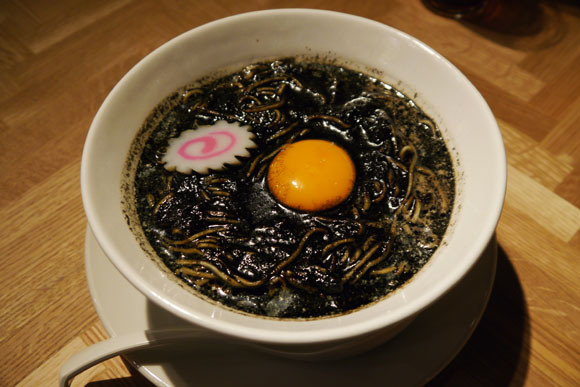


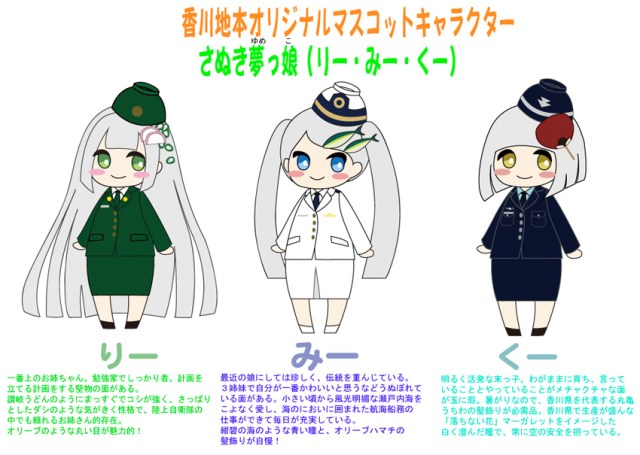
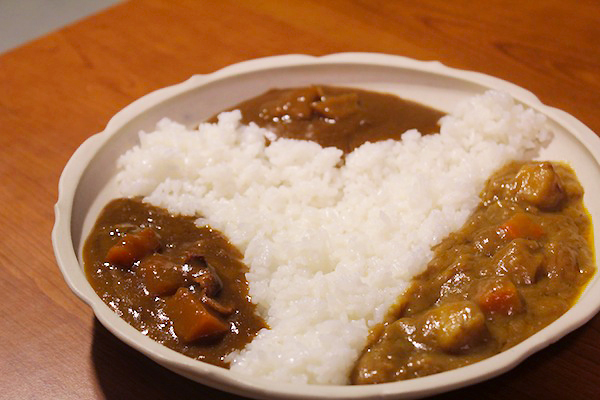

 Station of despair: What to do if you get stuck at the end of Tokyo’s Chuo Rapid Line
Station of despair: What to do if you get stuck at the end of Tokyo’s Chuo Rapid Line This downtown Tokyo cafe is like a time machine that takes you back 50 years into the past
This downtown Tokyo cafe is like a time machine that takes you back 50 years into the past Japanese government will check and judge new baby name pronunciations, presents guidelines
Japanese government will check and judge new baby name pronunciations, presents guidelines Totoro towels gently glow in the dark to set the Ghibli nighttime mood in your home【Photos】
Totoro towels gently glow in the dark to set the Ghibli nighttime mood in your home【Photos】 The best Christmas Market in Japan? Yokohama event is top choice for travellers
The best Christmas Market in Japan? Yokohama event is top choice for travellers Evangelion and McDonald’s Japan launch first-ever collaboration with transforming figures【Video】
Evangelion and McDonald’s Japan launch first-ever collaboration with transforming figures【Video】 Japan now has fish-shaped soy sauce bottle hand cream
Japan now has fish-shaped soy sauce bottle hand cream Studio Ghibli showcases traditional craftsmanship with new wallet range
Studio Ghibli showcases traditional craftsmanship with new wallet range The results are in! One Piece World Top 100 characters chosen in global poll
The results are in! One Piece World Top 100 characters chosen in global poll We spent over US$400 at a Tokyo premium capsule machine, and we’re not sure how we feel about it
We spent over US$400 at a Tokyo premium capsule machine, and we’re not sure how we feel about it Japanese company develops classy heavy metal band frames for glasses
Japanese company develops classy heavy metal band frames for glasses One of Japan’s rarest sweets is a sell-out hit that looks and tastes like frost
One of Japan’s rarest sweets is a sell-out hit that looks and tastes like frost Mysterious light-up rainy night-sound Totoro figure doesn’t actually show a scene from the anime
Mysterious light-up rainy night-sound Totoro figure doesn’t actually show a scene from the anime Major Japanese city is abolishing extracurricular activities at all of its middle schools
Major Japanese city is abolishing extracurricular activities at all of its middle schools Over 800 Studio Ghibli anime world paintings compiled in beautiful new hardcover art book【Pics】
Over 800 Studio Ghibli anime world paintings compiled in beautiful new hardcover art book【Pics】 Spirited Away and Princess Mononoke plushies show a softer side of formidable Ghibli characters
Spirited Away and Princess Mononoke plushies show a softer side of formidable Ghibli characters Shakey’s is back! All-you-can-eat pizza chain returns to downtown Tokyo’s Shinjuku
Shakey’s is back! All-you-can-eat pizza chain returns to downtown Tokyo’s Shinjuku Studio Ghibli tea blends contain ingredients inspired by My Neighbour Totoro
Studio Ghibli tea blends contain ingredients inspired by My Neighbour Totoro Possessing Harry Potter’s Sword of Godric Gryffindor is now illegal in Japan
Possessing Harry Potter’s Sword of Godric Gryffindor is now illegal in Japan Uniqlo announces first-ever collaboration with horror manga master Junji Ito【Photos】
Uniqlo announces first-ever collaboration with horror manga master Junji Ito【Photos】 J-pop mega star Ado reveals she’s been living in the U.S., may not understand language acquisition
J-pop mega star Ado reveals she’s been living in the U.S., may not understand language acquisition Starbucks Japan is calling it quits with paper straws
Starbucks Japan is calling it quits with paper straws Studio Ghibli releases new range of cardigans for anime fans
Studio Ghibli releases new range of cardigans for anime fans Japan’s most popular castle raising ticket prices by up to 200 percent for non-local tourists
Japan’s most popular castle raising ticket prices by up to 200 percent for non-local tourists Furikake rice seasoning sales are soaring, which is bad news for Japan as a whole
Furikake rice seasoning sales are soaring, which is bad news for Japan as a whole Studio Ghibli heroine cardigans give you warmth and strength to face everyday challenges
Studio Ghibli heroine cardigans give you warmth and strength to face everyday challenges Eight unforgettable hot springs, as recommended by Japan’s “Professor Bath”
Eight unforgettable hot springs, as recommended by Japan’s “Professor Bath” McDonald’s new Happy Meals offer up cute and practical Sanrio lifestyle goods
McDonald’s new Happy Meals offer up cute and practical Sanrio lifestyle goods Foreign tourists on Shinkansen bullet train break suitcase etiquette, angering local passengers
Foreign tourists on Shinkansen bullet train break suitcase etiquette, angering local passengers [Deleted] Article written for April Fool’s Day 2018
[Deleted] Article written for April Fool’s Day 2018 Japanese government to make first change to romanization spelling rules since the 1950s
Japanese government to make first change to romanization spelling rules since the 1950s Foreigner’s request for help in Tokyo makes us sad for the state of society
Foreigner’s request for help in Tokyo makes us sad for the state of society Japanese convenience store Family Mart announces abolishment of eat-in spaces
Japanese convenience store Family Mart announces abolishment of eat-in spaces Life-size vibrating Legend of Zelda Master Sword for sale from Nintendo【Photos】
Life-size vibrating Legend of Zelda Master Sword for sale from Nintendo【Photos】 Princesses, fruits, and blacksmiths: Study reveals the 30 most unusual family names in Japan
Princesses, fruits, and blacksmiths: Study reveals the 30 most unusual family names in Japan Studio Ghibli releases free-download board game — Here’s how to play it without reading Japanese
Studio Ghibli releases free-download board game — Here’s how to play it without reading Japanese Evangelion and McDonald’s Japan launch first-ever collaboration with transforming figures【Video】
Evangelion and McDonald’s Japan launch first-ever collaboration with transforming figures【Video】 Japan now has fish-shaped soy sauce bottle hand cream
Japan now has fish-shaped soy sauce bottle hand cream Studio Ghibli showcases traditional craftsmanship with new wallet range
Studio Ghibli showcases traditional craftsmanship with new wallet range The results are in! One Piece World Top 100 characters chosen in global poll
The results are in! One Piece World Top 100 characters chosen in global poll We spent over US$400 at a Tokyo premium capsule machine, and we’re not sure how we feel about it
We spent over US$400 at a Tokyo premium capsule machine, and we’re not sure how we feel about it Mysterious light-up rainy night-sound Totoro figure doesn’t actually show a scene from the anime
Mysterious light-up rainy night-sound Totoro figure doesn’t actually show a scene from the anime Celebrating legal marriage days in Japan with budget-friendly photoshoots
Celebrating legal marriage days in Japan with budget-friendly photoshoots Tokyo hairstylist performs makeover magic in amazing before/after haircut video
Tokyo hairstylist performs makeover magic in amazing before/after haircut video Chikura no Iwaya: Secret beach cave only appears for two hours a day, and here’s how to see it
Chikura no Iwaya: Secret beach cave only appears for two hours a day, and here’s how to see it Does Japan’s T.M. Revolution J-rock cake really look like the song it’s named after?
Does Japan’s T.M. Revolution J-rock cake really look like the song it’s named after? One of Japan’s rarest sweets is a sell-out hit that looks and tastes like frost
One of Japan’s rarest sweets is a sell-out hit that looks and tastes like frost How to convert the Western calendar to Japanese Reiwa years
How to convert the Western calendar to Japanese Reiwa years Daiso opens massive new 25,392-square foot Tokyo flagship store with its two sub-brands included
Daiso opens massive new 25,392-square foot Tokyo flagship store with its two sub-brands included